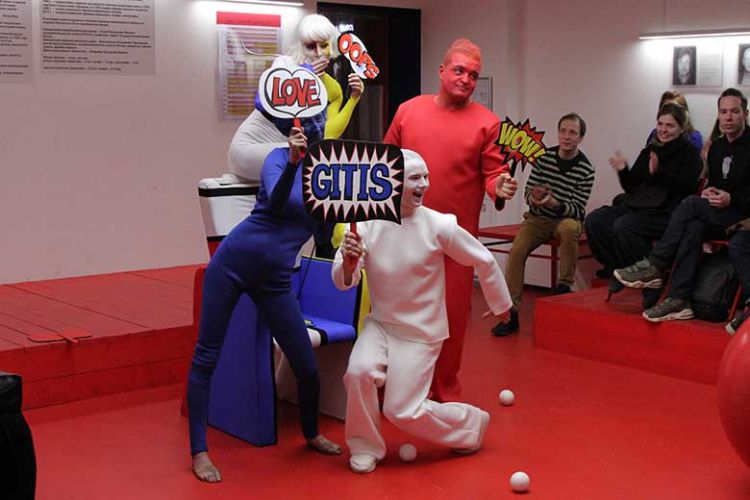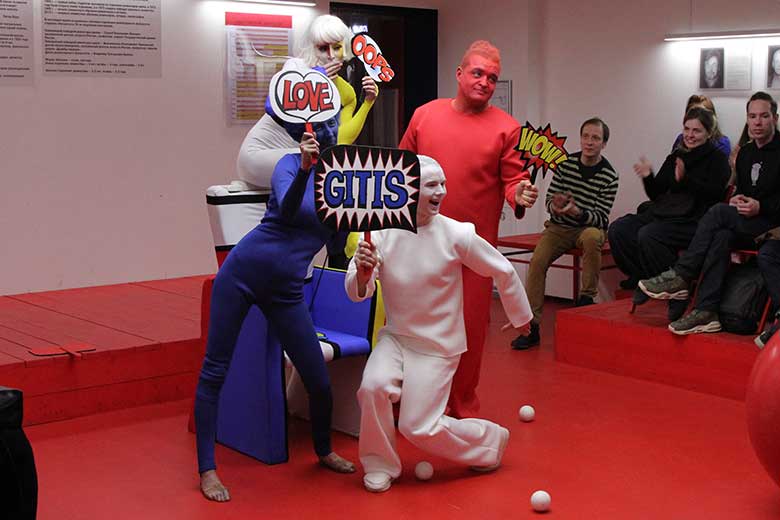Under the big top of circus directing

One of the boldest faculties at GITIS crosses disciplinary boundaries and international borders
A key component of the Russian Institute of Theatre Arts (GITIS), the circus directing department was founded in 1978 by Georgy Bardian, who created many influential circus shows, including Circus on Ice, Ballet on Ice and Russian Youth Circus.
During Professor Bardian’s tenure, Soviet artists began to tour abroad and his influence grew through several other roles, including chairman of the Union State Circus Arts Council and editorial board member of several circus magazines. His work raised the profile of Soviet Circus – the emphasis of which was towards dance and narrative, in contrast to Western Europe’s circus style – and it is the Soviet style that has prevailed.
Carrying on his legacy is Helena Poldi, the current artistic director of GITIS’ circus directing department. She is also the artistic director of Antique Circus, an independent theatre and interdisciplinary circus company founded in 2010 with Gulnara Gibadullina, another member of the GITIS faculty.
A graduate of the institute’s circus directing department, Professor Poldi believes that GITIS’ teaching of the history of the discipline is the bedrock of a curriculum that helps to train the next generation of internationally recognised circus directors. There is also a connection between the circus and drama directing programmes, giving the circus directing students a wide-ranging knowledge of the discipline.
The practical side of circus directing is finely honed at GITIS, too. Describing students’ training, Professor Poldi says that it runs “from simple to complex. It is a sketch method, refined according to circus genres and different ways of staging scenes.”
Graduates have participated in many productions and projects both in Russia and around the world. In recent times, the activities of the department and GITIS as a whole have also become “more complete and diverse”, as collaborations between departments have increased. And the profile of GITIS has been further raised by an exhibition dedicated to its 140th anniversary, held at the Moscow Museum of Modern Art. “In my opinion, this exhibition has become a bright and significant event in the cultural life of Moscow,” Professor Poldi says.
Collaborations with external partners are equally important, she adds, not least because they fit with GITIS’ wider ethos. One example is a partnership with the directing department of the Zurich Institute of Arts. “Interactions with circus centres in Europe, Australia and China, which are on the rise, will help to activate interdisciplinary directions for the Russian circus,” Professor Poldi says.
As GITIS continues to establish itself on the world stage, there are big changes ahead, with a pending proposal to unite its circus directing department and the Rumyantsev State School of Circus. Such a merger would, Professor Poldi suggests, “create a possibility for Rumyantsev students to become deeply immersed in theatre aesthetics and the theoretical development of global dramatic and theatrical heritage”. In turn, GITIS students would have yet more opportunities to “master the practical circus skills of physical theatre, new modern choreography and visual drama”, she says.
Find out more about GITIS.
